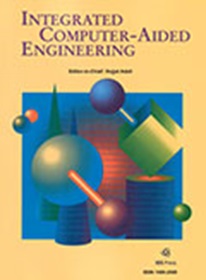基于可转移的分层强化学习的三维重建
IF 5.3
2区 计算机科学
Q1 COMPUTER SCIENCE, ARTIFICIAL INTELLIGENCE
引用次数: 1
摘要
三维重建在CAD(计算机辅助设计)/CAE(计算机辅助工程)/CAM(计算机辅助制造)中极为重要。为了提高可解释性,强化学习(RL)被用于通过一系列编辑动作从图像中重建3D形状。然而,RL在三维重建中的典型应用面临着一些问题。由于维数的诅咒,搜索空间会随着动作空间的增加而呈指数级增长,从而导致性能低下,特别是在三维重建中对于复杂的动作空间。此外,大多数工作涉及为每个形状类训练一个特定的代理,而没有从其他人那里学习相关经验。因此,我们提出了一种具有可转移性的分层强化学习方法来重建3D形状(HRLT3D)。首先,将操作分组为可由顶级代理选择的宏操作。其次,将任务分解为层次简化的子任务,由子agent来解决。与传统的分层强化学习(HRL)不同,我们提出了一种基于增强状态空间的子智能体(ASS-Sub-Agent)来代替一组子智能体,该方法由于共享学习和参数较少,可以加快训练过程。此外,由于增加了多样化的状态,简化了任务,使得ASS-Sub-Agent更容易转移到其他类的数据中。在典型的公共数据集上的实验结果表明,所提出的HRLT3D的性能明显优于最近的基线。更令人印象深刻的是,实验也证明了我们的方法在不同类别的数据之间具有极强的可移植性。本文章由计算机程序翻译,如有差异,请以英文原文为准。
3D reconstruction based on hierarchical reinforcement learning with transferability
3D reconstruction is extremely important in CAD (computer-aided design)/CAE (computer-aided Engineering)/CAM (computer-aided manufacturing). For interpretability, reinforcement learning (RL) is used to reconstruct 3D shapes from images by a series of editing actions. However, typical applications of RL for 3D reconstruction face problems. The search space will increase exponentially with the action space due to the curse of dimensionality, which leads to low performance, especially for complex action spaces in 3D reconstruction. Additionally, most works involve training a specific agent for each shape class without learning related experiences from others. Therefore, we present a hierarchical RL approach with transferability to reconstruct 3D shapes (HRLT3D). First, actions are grouped into macro actions that can be chosen by the top-agent. Second, the task is accordingly decomposed into hierarchically simplified sub-tasks solved by sub-agents. Different from classical hierarchical RL (HRL), we propose a sub-agent based on augmented state space (ASS-Sub-Agent) to replace a set of sub-agents, which can speed up the training process due to shared learning and having fewer parameters. Furthermore, the ASS-Sub-Agent is more easily transferred to data of other classes due to the augmented diverse states and the simplified tasks. The experimental results on typical public dataset show that the proposed HRLT3D performs overwhelmingly better than recent baselines. More impressingly, the experiments also demonstrate the extreme transferability of our approach among data of different classes.
求助全文
通过发布文献求助,成功后即可免费获取论文全文。
去求助
来源期刊

Integrated Computer-Aided Engineering
工程技术-工程:综合
CiteScore
9.90
自引率
21.50%
发文量
21
审稿时长
>12 weeks
期刊介绍:
Integrated Computer-Aided Engineering (ICAE) was founded in 1993. "Based on the premise that interdisciplinary thinking and synergistic collaboration of disciplines can solve complex problems, open new frontiers, and lead to true innovations and breakthroughs, the cornerstone of industrial competitiveness and advancement of the society" as noted in the inaugural issue of the journal.
The focus of ICAE is the integration of leading edge and emerging computer and information technologies for innovative solution of engineering problems. The journal fosters interdisciplinary research and presents a unique forum for innovative computer-aided engineering. It also publishes novel industrial applications of CAE, thus helping to bring new computational paradigms from research labs and classrooms to reality. Areas covered by the journal include (but are not limited to) artificial intelligence, advanced signal processing, biologically inspired computing, cognitive modeling, concurrent engineering, database management, distributed computing, evolutionary computing, fuzzy logic, genetic algorithms, geometric modeling, intelligent and adaptive systems, internet-based technologies, knowledge discovery and engineering, machine learning, mechatronics, mobile computing, multimedia technologies, networking, neural network computing, object-oriented systems, optimization and search, parallel processing, robotics virtual reality, and visualization techniques.
 求助内容:
求助内容: 应助结果提醒方式:
应助结果提醒方式:


